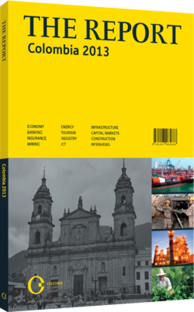From the farm to the table: More acreage and free trade agreements set to boost cocoa industry
While cocoa is produced en masse in Africa and Asia, plantations in Colombia compete by yielding fine aroma beans, which make up 5% of the global market, according to the International Cocoa Organisation (ICCO). Processing is primarily divided between Nutresa, formerly the Compañía Nacional de Chocolate, and CasaLuker. Nestlé Colombia also produces chocolate but is less involved with cocoa cultivation. Even given the domination of the market by a few players, growth means there are opportunities in industrial cocoa processing for new players and investment.
ICCO figures for 2013 predict a global cocoa deficit of 45,000 tonnes, after large surpluses over the last two years. Demand is growing at a rate that the international supply has been unable to meet, and chocolate producers in Colombia are eyeing opportunities related to production and export.
FTAS: Chocolate companies view free trade agreements (FTAs) as an opportunity to secure new markets. CasaLuker, for example, has shifted its attention to the export market, sending products to more than 30 countries, the main destinations being the US, Russia, Argentina, Mexico, and Trinidad and Tobago. Its products have made a small entrance into Europe, but sales are expected to increase now that the FTA with the EU has been put into operation. According to ICCO, Europeans consume nearly half of the world’s chocolate, with per capita rates of 10.9 kg per year.
RISING COMPETITORS: The largest regional competitor for the Colombian cocoa industry is Ecuador, which produces around 200,000 tonnes per year. However, according to David Jaramillo, the brand manager at CasaLuker, Ecuador lacks the infrastructure to add value to the raw material, which is the path Colombian producers have taken. “The trend in Colombia in general is towards selling cacoa not as a grain but rather as a product with added value,” Jaramillo told OBG. Cocoa is used in drinks, pastes and butter, and is also a part of many cosmetics. One way for Colombia’s cocoa sector to position itself internationally may be by joining the ICCO. The National Federation of Cocoa of Colombia, which is also known as Fedecacao, has been applying for membership for more than 10 years. If it secures membership, the benefits for Colombia would include possible cooperation in research, technology transfer and marketing, as well as having local cocoa recognised as premium – with a resulting increase in its sales price.
ADDED ACREAGE: Meanwhile, to diversify its portfolio, CasaLuker has entered the Ecuadorian market with on-site operations. Within Colombia, the firm accounts for 35% of cocoa production. High on the government’s agenda of industries to encourage, cocoa production receives ample institutional support. The government has announced plans to implement a national programme aimed at doubling the total acreage of cocoa production from 100,000 ha to 200,000 ha by 2020.
According to the World Cocoa Foundation, cocoa demand is set to grow by 2.2% annually; to satisfy demand, an additional 80,000 tonnes per annum will be required. “This is where Colombia has an opportunity. We export very little and have so far only worried about catering to the domestic market, while we have quality, aroma and global recognition,” the former minister of agriculture and rural development, Juan Camilo Restrepo Salazar, told local press in December 2012.
"The government will subsidise and finance the renewal of cocoa crops in order to have a production of 200,000 tonnes by 2020," he said.
In fact, a combination of private and state funds will go toward renovating crops, which reach peak productive capacity at around 25 years. Development on the agricultural end, according to industry specialists like Carlos Enrique Piedrahita, the president of Nutresa, will be key. “For agriculture, investment in applied research, such as in soils, climates and species, is essential to identify the country’s most logical crops,” he told OBG.
“There is an obsession in some parts with cultivating products in which we cannot compete globally. Colombia ought to imitate the specialisation process that countries have conducted, such as Brazil via Embrapa.”
You have reached the limit of premium articles you can view for free.
Choose from the options below to purchase print or digital editions of our Reports. You can also purchase a website subscription giving you unlimited access to all of our Reports online for 12 months.
If you have already purchased this Report or have a website subscription, please login to continue.

